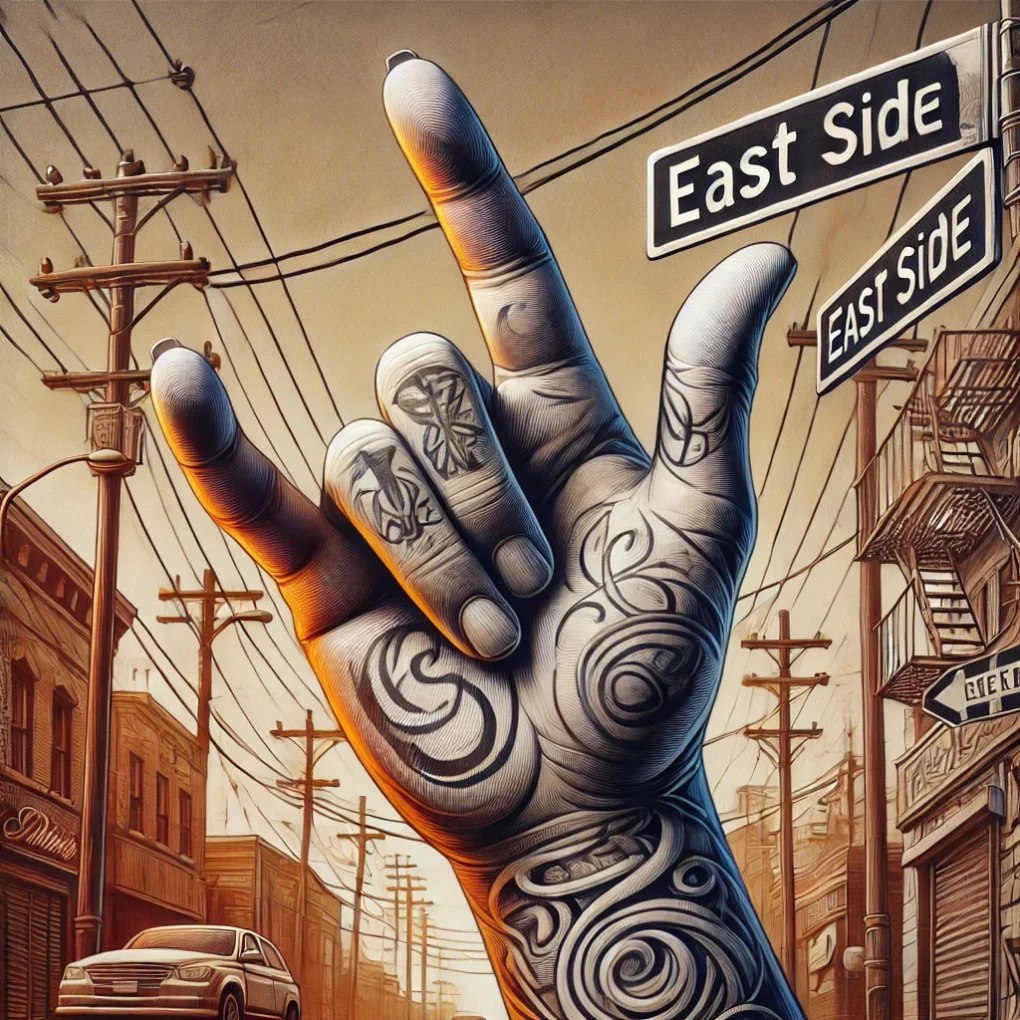The term “East Side Gang Sign” refers to a series of hand gestures used by various gangs, predominantly in urban areas, to symbolize identity, unity, and territorial claims. These signs are a crucial aspect of gang culture, serving as a form of non-verbal communication that conveys messages of loyalty, power, and membership. Understanding these signs can provide insights into the social dynamics of gang-affiliated groups and their historical context.
Historical Background
East Side gang signs have their roots in the socio-economic challenges faced by marginalized communities in urban environments. Initially emerging in the mid-20th century, these signs were a way for gang members to assert their presence and protect their territories. Over time, these gestures became more sophisticated, incorporating elements that reflect the specific identities and values of different gangs.
Common East Side Gang Sign and Their Meanings
Unity and Solidarity
One of the primary purposes of gang signs is to signify unity among members. A common gesture is the clenched fist bump, which represents solidarity and mutual support. This sign is often used during gatherings or when members meet to reaffirm their bond and shared goals.
Asserting Power and Authority
Another significant gesture is the single-finger point, usually executed with the index finger extended and other fingers folded. This sign is a display of power and leadership within the gang hierarchy, signaling dominance and authority over a particular area or group of people.
Silent Communication
Gang signs also serve as a means of silent communication, especially in situations where verbal interaction could be risky. For instance, the “finger whisper,” where fingers are positioned to mimic the act of whispering, allows gang members to convey messages discreetly. This technique is particularly useful in environments where maintaining a low profile is essential.
Variations Across Regions
While the core elements of East Side gang signs remain consistent, there are regional variations that reflect local influences and affiliations. In Southern California, for example, the East Side sign might involve a more exaggerated hand position, while in Chicago, the sign could be modified to include different finger configurations. These regional differences underscore the adaptability of gang signs to local cultures and the specific needs of different groups.
Specific Examples of East Side gang sign
- Triangle Formation: Represents initiation and unity within sub-groups.
- Open Palm Facing Outward: Used for asserting territorial claims.
Symbolism and Cultural Significance
The symbolism behind East Side gang signs extends beyond simple gestures. Each sign encapsulates aspects of the gang’s identity, including their history, values, and socio-political stance. For instance, the letter “E” formed with fingers signifies Eastern dominance and is a mark of pride for many gang members. The intricate formation of these signs often involves a deep understanding of the gang’s culture and the significance of each gesture.
Tattoos and Graffiti
In addition to hand signs, gang members often use tattoos and graffiti to signify their affiliation. These symbols are unique to each gang and serve as permanent markers of membership. Tattoos, in particular, act as encrypted codes that only fellow members can fully understand, while graffiti is used to mark territories and issue challenges to rival gangs.
Risks and Consequences
Engaging in or imitating gang signs can have serious legal and social repercussions. These gestures are not merely cultural artifacts but are tied to the violent and often illegal activities of gangs. Misinterpreting or using these signs without understanding their context can lead to dangerous misunderstandings and conflicts.
East Side gang sign are a complex and integral part of gang culture, representing much more than simple hand gestures. They are symbols of identity, power, and unity, deeply embedded in the social fabric of urban communities. Understanding these signs requires a nuanced approach that takes into account their historical evolution, regional variations, and the socio-economic conditions that give rise to gang cultures. While these signs are fascinating from an anthropological perspective, it is crucial to approach them with respect and awareness of their serious implications.
By fostering empathy and informed curiosity, we can gain a deeper appreciation of the cultural codes that shape the lives of individuals in gang-affiliated communities, while also promoting a more just and safe society.











